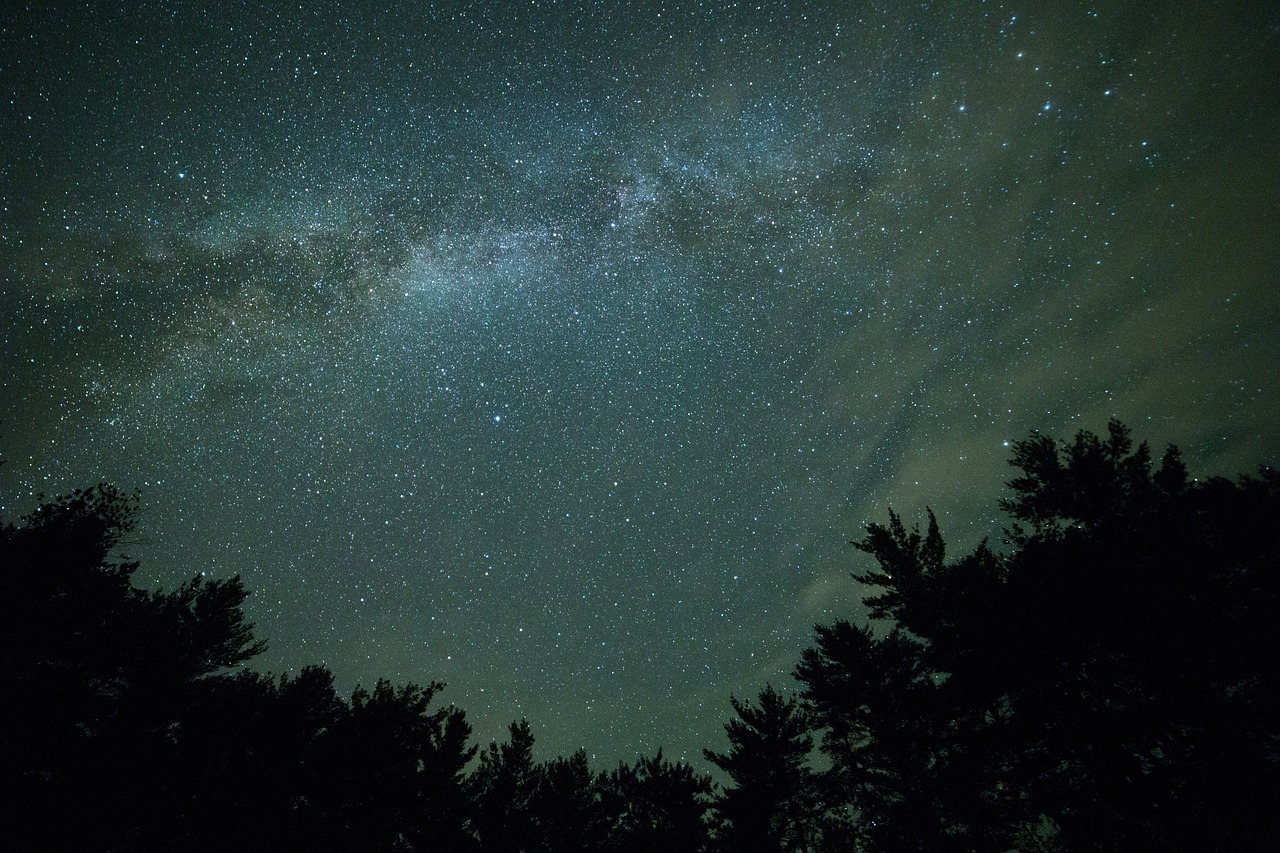4 Recommendations for Japanese Dramas About Parenting, Showcasing Warm Parent-Child Relationships
Are you interested in watching Japanese dramas about parenting? If so, just check out the following list of recommendations and brief reviews.

Kapanlagi.com - In Japan, these stars are not only objects of admiration but have also become an integral part of language, culture, and tradition. Stars in Japanese are quite simple yet complex; the Japanese language has a wealth of terms to describe celestial objects.
This article will invite KLovers to explore the world of astronomy through the lens of Japanese culture, thoroughly discussing expressions related to stars in Japanese and how these concepts have shaped and enriched the heritage of Japanese culture.
For those of you who want to learn Japanese, here are expressions of stars in Japanese, complete with culture and other Japanese terms in the world of astronomy. Let’s check it out, KLovers!

Illustration (credit: pixabay.com)
KLovers who are learning Japanese certainly need to know Japanese terms, one of which is the common expression for star in Japanese, which is "hoshi". This word is used to describe celestial bodies that shine and are visible at night.
Then there is another word for star in Japanese called "Seiza", which is the term used to refer to constellations. This word combines the characters for "star" and "sit", depicting a group of stars that form a specific pattern.
Another term for star in Japanese is "Nagareboshi", which refers to a shooting star or meteor. Literally, it means "flowing star", describing the visual appearance of a meteor streaking across the night sky.
In Japanese culture, stars themselves hold symbolic and mythological meanings. Folk tales such as Tanabata are closely related to stars, highlighting the importance of these celestial bodies in Japanese tradition. Thus, it becomes important knowledge for KLovers to understand.

Illustration (credit: pixabay.com)
In addition to knowing stars in Japanese, KLovers can also learn about star beliefs in Japanese culture. Stars hold a special place in Japanese culture, influencing various aspects of life, traditions, and beliefs of the people. Here is an explanation of stars in Japanese culture:
1. Mythology and Folklore
Stars often appear in Japanese mythology. The most famous story is Tanabata, a love story between Orihime (the Vega star) and Hikoboshi (the Altair star). This legend inspires an annual festival celebrated on July 7.
2. Traditional Astronomy
Ancient Japanese people developed their own astronomical system, called "Seimei-gaku". They observed stars to predict fate, determine time, and create agricultural calendars.
3. Art and Literature
Stars often appear in traditional Japanese poetry such as haiku and tanka. In visual arts, stars are often depicted in night landscape paintings and ukiyo-e (woodblock prints).
4. Symbolism
In Japanese culture, stars are often associated with hope, dreams, and destiny. Shooting stars are considered to bring good luck, and people often make wishes upon seeing them.
5. Festivals and Traditions
Besides Tanabata, there are several other festivals related to stars. For instance, the "Hoshimatsuri" or Star Festival held in various regions of Japan.
6. The Influence of Modernity
In Japanese pop culture, stars remain an important symbol. Many anime, manga, and J-pop songs use stars as a metaphor or visual element.
7. Astrology
Although not part of Japan's original tradition, Western astrology has become popular in modern Japan. Many Japanese people are interested in the zodiac and horoscopes.
8. Education and Science
Japan has made significant contributions to modern astronomy. Observatories and planetariums are popular as educational and entertainment destinations.
Overall, stars in Japanese culture represent a unique blend of ancient traditions, spiritual beliefs, and an appreciation for modern science. They continue to inspire and captivate the Japanese public, from folklore to space exploration.

Illustration (credit: pixabay.com)
There are other terms besides stars in the Japanese language. These terms are astrological terms that may help KLovers in learning Japanese. Here is a list of universe terms in Japanese along with their meanings:
1. Uchuu - Universe
2. Taiyou - Sun
3. Tsuki - Moon
4. Hoshi - Star
5. Wakusei - Planet
6. Eisei - Satellite
7. Suisei - Comet
8. Inseki - Meteorite
9. Ginga - Galaxy
10. Burakku hooru - Black hole
11. Kouseiden - Star cluster
12. Ryuusei - Meteor
13. Waku - Orbit
14. Chouseki - Tides
15. Nichirin - Solar corona
16. Gesshoku - Lunar eclipse
17. Nisshoku - Solar eclipse
18. Seiza - Constellation
19. Tenmon - Observatory
20. Uchuu hikousi - Astronaut
21. Andromeda-za - Andromeda constellation
22. Tenmongaku - Astronomy
23. Uchu-sen - Cosmic rays
24. Daibakuhatsu - Big Bang
25. Chikyu - Earth
26. Kasei - Mars
27. Mokusei - Jupiter
28. Kinsei - Venus
29. Dosei - Saturn
30. Tentai - Celestial body
31. Suisei - Mercury
32. Tennousei - Uranus
33. Kaiousei - Neptune
These are the star terms in Japanese that KLovers can learn. Understanding star expressions in Japanese opens a window to the beauty of the universe and its cultural richness.
(kpl/dhm)
Cobain For You Page (FYP) Yang kamu suka ada di sini,
lihat isinya
Are you interested in watching Japanese dramas about parenting? If so, just check out the following list of recommendations and brief reviews.
So, are you interested in watching Chinese dramas about one night stands? If yes, let's take a look at the list of recommendations and brief reviews below.
Let's explore how the Pisces zodiac may influence Ha Jung Woo's career journey and personal life. As well as uncovering his unique sides that may not be widely known to the public. Let's check it out, KLovers!
Interestingly, this Chinese drama WIND DIRECTION presents a family story intertwined with generational conflicts that often occur in real life. The focus of this drama is on a family that has lived for several generations in an oil field area.
Here is the complete synopsis of the film MECHANIC RESURRECTION along with the cast list. Let's dive deeper into the plot and the interesting characters in this action film. Check it out, KLovers!
So, what is the explanation of the meaning of dreaming about riding in a car with an unknown person? To find out, just take a look at the following review.
Curious about the explanation of the meaning of twin mayang according to Javanese primbon? To find out, just take a look at the following explanation.
So, what is the explanation of the meaning of twitching in the upper left waist according to primbon? To find out, let's directly review the following discussion.
For fans, identifying the personality types of the CLASSROOM OF THE ELITE MBTI characters can provide deep insights into the motivations and actions of the characters. Now, to find out the personality types of the core characters in CLASSROOM OF THE ELITE MBTI, check out the following review.
On the internet, various theories circulate about Emma's personality type in BLUE IS THE WARMEST COLOR MBTI INFP. This is because some of Emma's traits in BLUE IS THE WARMEST COLOR are believed to indicate that she is an INFP. To find out more, just take a look at the following review.
Come on, let's see how the personality of Lee Na Young, Won Bin's wife, is viewed through the Pisces zodiac, which influences her acting style and daily life. Let's check it out, KLovers!
To understand the meaning of dreaming of riding a boat, just take a look at the explanation below.